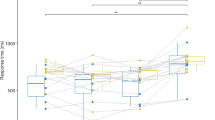Abstract
Changes to the Rules of Golf for 2019 allow a golfer to make a stroke from the putting green with the flagstick unattended in the hole. Such an action would previously incur a penalty. This work provides a model framework for the interaction among the ball, hole, and flagstick. The model is based in part on earlier work by Holmes, who examined the ball without the flagstick as allowed under the former rules. The interaction of the ball with the hole/flagstick area is evaluated for whether the ball is holed and for the final distance from the hole in the case of a miss. The flagstick is found to be of mixed benefit, performing more as a backstop as the impact with the flagstick becomes more central (head-on). Glancing blows at higher input angles are found to cause missed shots at lower velocities. Putts that are too fast to be made whether the flagstick is in or out of the hole are found to rest closer to the hole with the flagstick present. The implications are that shots for which the line of putt is better known (increasing the odds of central impact) and where speed may not be well controlled (e.g., greenside pitch shots) benefit from having the flagstick in the hole.










Similar content being viewed by others
Notes
If the ball center of mass is below the surface of the hole, the contact point will lie at \((x_c,y_c,z)\). However, the case of contact with the ball center of mass below the hole edge leads to capture of the ball and is thus not considered here.
An angled flagstick will change this assumption.
This is the sort of transition which leads to a putt exiting the hole on a horseshoe-shaped trajectory.
References
Jorgensen T (1994) The physics of golf. Contemp Phys 35
Penner A (2003) The physics of golf. Rep Prog Phys 66:131–171
Betzler N, Slater C, Strangwood M, Monk S, Otto S, Wallace E (2011) The static and dynamic stiffness behaviour of composite golf shafts and their constituent materials. Sports Eng 14:27–37
Swanek D, Carey J (2007) Braided composite materials for the production of lightweight, high rigidity golf shafts. Sports Eng 10:195–208
McNally W, Henrikson E, McPhee J (2019) A continuous analytical shaft model for fast dynamic simulation of the golf swing. Sports Eng 22:20
MacKenzie S, Springings E (2010) Understanding the mechanisms of shaft deflection in the golf swing. Sports Eng 12:69–75
Petersen W, McPhee J (2010) Shape optimization of golf clubface using finite element impact models. Sports Eng 12:77–85
Traub L, Munson A, McBurney J (2019) Experimental study of drag reduction on a golf driver club using discrete surface elements. Sports Eng 22:12
Monk S, Davis C, Otto S, Strangwood M (2005) Material and surface effects on the spin and launch angle generated from a wedge/ball interaction in golf. Sports Eng 8:3–11
Crabill J, Witherden F, Jameson A (2019) High-order computational fluid dynamics simulations of a spinning golf ball. Sports Eng 22:1–9
Yaghoobian N, Mittal R (2018) A computational approach for predicting plant canopy induced wind effects on the trajectory of golf shots. Sports Eng 21:1–10
Penner A (2002) The physics of putting. Can J Phys 80:83–96
Daemi N, Henning S, Gilbert J, Yuya P, Ahmadi G (2016) On generalized rolling of golf balls considering an offset center of mass and rolling resistance: a study of putting. Sports Eng 19:35–46
Lindsay N (2003) Topspin in putters - a study of vertical gear-effect and its dependence on shaft coupling. Sports Eng 6:81–93
Holmes B (1991) Putting: how a golf ball and hole interact. Am J Phys 59(2):129–136
United States Golf Association (2019) Rules of Golf. http://www.usga.org/content/usga/home-page/rules-hub.html. Accessed: 04 March 2019
Mase T (2019) https://www.golfdigest.com/story/the-science-behind-why-the-flagstick-should-be-pulled-999-percent-of-the-time. Accessed: 12 Nov 2019
Pelz D (2019) http://www.golf.com/instruction/2019/01/02/dave-plez-putt-with-the-flagstick-in-rule-change-2018. Accessed: 14 Oct 2019
United States Golf Association (2012) Stimpmeter Instruction Booklet. Brochure, https://www.usga.org/content/dam/usga/pdf/imported/StimpmeterBookletFINAL.pdf
Pelz D (2007) http://www.golf.com/instruction/dave-pelz-all-my-secrets. Accessed: 14 Oct 2019
Author information
Authors and Affiliations
Corresponding author
Additional information
Publisher's Note
Springer Nature remains neutral with regard to jurisdictional claims in published maps and institutional affiliations.




